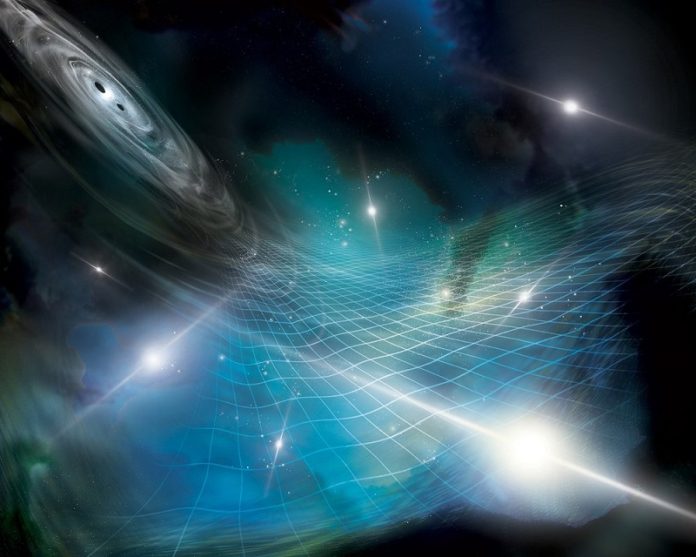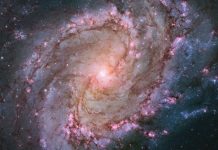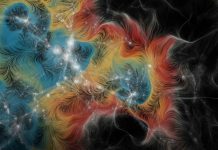
Scientists have made an incredible discovery, providing the first evidence that our Earth, and everything around us in the universe, is surrounded by a gentle sea of gravitational waves.
These waves, proposed by Albert Einstein more than a hundred years ago, are ripples in the fabric of space and time.
They are caused by some of the most violent events in the universe, like merging black holes.
This exciting discovery has been published in a collection of papers in The Astrophysical Journal Letters.
It is the result of 15 years of observations by a team of 190 scientists from the United States and Canada, who are part of the North American Nanohertz Observatory for Gravitational Waves (NANOGrav).
So, how did these scientists detect these waves? They used a network of dead stars, known as pulsars, observed by three major radio telescopes.
The gravitational waves, very much like ripples in a pond, cause these pulsars to slightly bob, much like buoys on a sea.
Katerina Chatziioannou, a member of the NANOGrav team, explained that the impact of the gravitational waves on these pulsars is very weak and challenging to detect.
However, over time, and with more and more data, the scientists grew confident in their findings.
This discovery is significant because it offers a new way to explore and understand what happens when supermassive black holes – colossal giants lurking at the hearts of galaxies – begin their slow spiral towards merging.
These huge black holes, which are millions to billions of times the mass of our sun, take millions of years to merge and, in doing so, generate these slow-rolling gravitational waves.
Interestingly, the gravitational waves detected by NANOGrav are much lower in frequency than those previously detected by LIGO, another gravitational wave detector.
They are described as a background murmur compared to the more intense “shouts” that LIGO picks up.
Patrick Meyers, a NANOGrav team member, likens it to being at a party where you can’t distinguish individual voices, but hear a combined background noise.
With these slow-rolling gravitational waves, scientists are hoping to answer mysteries about merging supermassive black holes, like how often they occur, what causes them, and what factors contribute to their merging.
This is like having a new tool to better understand these fascinating celestial creatures.
Michele Vallisneri, another member of the NANOGrav team, called this a beautiful, unlikely experiment. He likened it to assembling a galaxy-sized gravitational-wave detector powered by the pulses of dead stars scattered across our galaxy.
This discovery is a great achievement for the international team of radio astronomers, neutron-star and black-hole experts, and gravitational-wave scientists.
In the future, the NANOGrav team will work with international partners, and will use new instruments such as Canada’s CHIME telescope and Caltech’s Deep Synoptic Array-2000.
With these additional resources, they aim to further explore the cosmic sea of gravitational waves and the mysteries they hold.
Follow us on Twitter for more articles about this topic.



